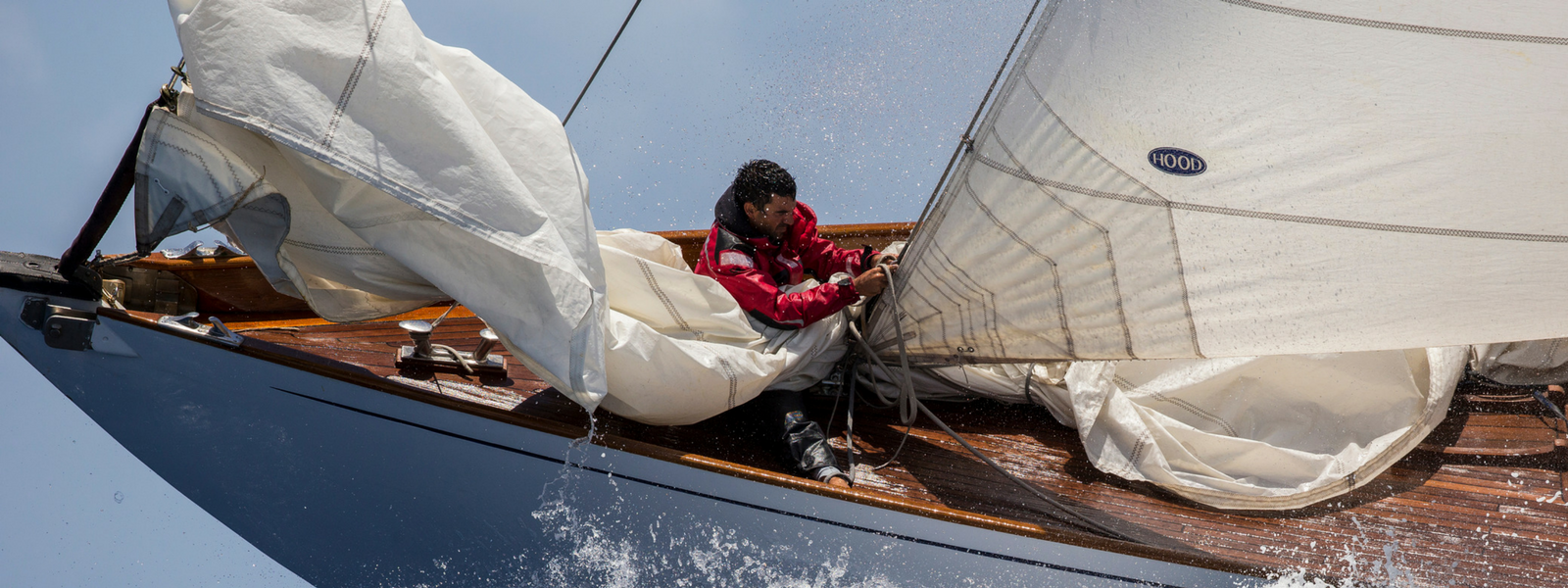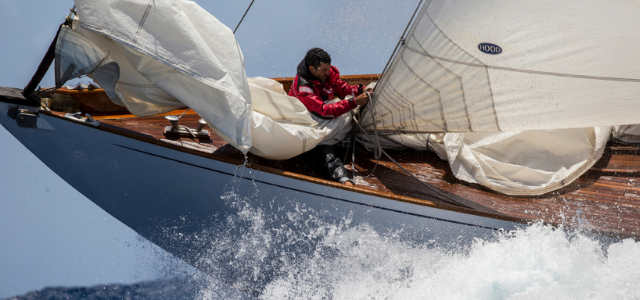Whether you're a club racer, ocean racer or enjoy extended cruising, managing your sail inventory can be a challenge. The trick to balancing boat optimisation with cost is having headsails with the broadest possible range so you can carry less on board and be kind to the budget.
It doesn’t matter what type of sailing you prefer, most headsail inventories on yachts carry compromises and trade-offs to cover a range of conditions with various wind speeds and wind angles.

Club and Harbour Racing
Club and harbour racing sail boats have the luxury of a certain maximum wind speed generally around the 25 true wind speed mark and don't require specialist reaching sails as the races are predominately windward / leeward style, therefore they really only need to cover 0 -25 knots of upwind work and if hanks are used you need a headsail that you can lump when slightly out of range and not destroy it.
My choice is three sails whether the boat has non-overlapping or overlapping sails we are talking about a light, medium and heavy. On the non-overlapping style of modern rigs we are talking J1, J2 & J3 all with battens, the range should be 10 knots true wind speed per sail with a couple of knots crossover per sail, so something like J1 (0-11) J2 (9-19) J3 (18-27).
The J1 and J2 should be the same area with the fabric lighter in the J1 and a deeper mould shape. The J2 is your medium jib and it pays to have it a little stronger in the back edge and leaning on the flatter mould shape (you can always throw backstay if required to deepen up down pressure) so you can lump it when you get caught on a beat before you can change, unless you can pull off quick tack change sets with a foil.
With the J3 heavy jib we want the luff length at 90% and sail with 85 - 90% of the sail area. The choice of sail handling is determined by the style of sailing. Hanks are great for short course racing where you can 100% drop the jib halyard to assist the kite with filling at top mark roundings, and great for hoists with no luff tape snags or tears in the late hoists.
Foils provide the additional benefit of sail changes mid leg and smooth forestay when gybing A sails with the jib hoisted. With an overlapping style rig, depending on the genoa tracks placement, fore and aft the norm is to have the class max or 150% light genoa, 140% medium and a 100% jib which would be your J3 style sail with battens as mentioned above.
Ocean Racing
For the ocean racing inventories, we have to face higher wind speeds and lumpier seas, hence we have to add some more specialised sails to the inventory above. A dedicated (HWJ) heavy weather jib is needed as part of the special regulations we race under. This sail area is governed by a simple formula of 13.5% of "I" squared ("I" being the vertical height of the fore triangle). We refer to this sail as J4. These predominantly have a high clew at least 1- 1.5m off the deck to allow the waves to get under it without damaging the sail. The J4 would have an 80% luff length and ~80% of the max sail area of the fore triangle.
The next sail down from the J4 is the J5, these have a 60% luff length and a ~60% sail area of the fore triangle.
Then we step down to a Storm Jib with a special regulations area of 5% of "I" squared. In the lighter air say 0 - 3 knots, when the J1 or light genoa is slating the rig and generally too heavy to fill with air and we have a lumpy sea, we use a Drifter. This is a light fabric generally 2 - 3oz and smaller than the fore triangle that we use as a wind seeker. Once drawing and the boat has headway, we change up to the light headsail again.
When not hard on the wind with a headsail and anywhere between 50 - 100 degrees true wind angle, we recommend Jib Tops. Jib Tops or Reachers on a yacht with overlapping headsails would not generally be larger than a 130% LP (luff perpendicular expressed as a percentage of the J measurement which is the distance from your forestay to deck attachment and the front of the mast at the deck collar). These dedicated reaching headsails provide a few benefits;
- With the clew usually higher than 2 meters off the deck, it provides a much broader and less critical sheeting angle and less (cupping) return in the leech.
- The high clew again keeps green water out of the jib foot and less damage from bashing the fabric over the stanchions and life lines.
Cruising
For the cruising sailor we try and utilise a combination of the sails listed above into a very limited inventory. First and foremost, most cruising yachts carry a roller furling headstay which allows you to furl headsails and reduce area. We find it best on all RFG's (roller furling headsails) to have marks on the foot to be able to calibrate headsail area reduction in "steps" when furling. The RFG is the go-to sail, then there is some deliberation on what should be added next in the trade off of extra work and extra expense. If your rig and deck interface can handle an inner forestay, then I would highly recommend you get one fitted as this provides these essential benefits:
- When reefed down to a second reef it will prevent the mast from inverting aft and provides security. When the headboard is down to the second reef or third reef position the spar requires additional support for that load fore and aft
- You can fit a heavy air staysail with hanks that assists in getting the centre of effort and height of the furled genoa aft and lower for better pitching, yawing and tracking especially with auto pilot engaged when sailing with the RFG fully furled.
- The boat can be sailed with cutter rig, adding some extra sail area, speed and reaching. In medium to fresh conditions sail with the RFG 60% furled and the staysail
- A storm jib can be attached to this stay with hanks so you have covered all the bases for ocean sailing.
Watch the video guide on how to measure your boat for sails
Happy Sailing from The Sail Exchange!

